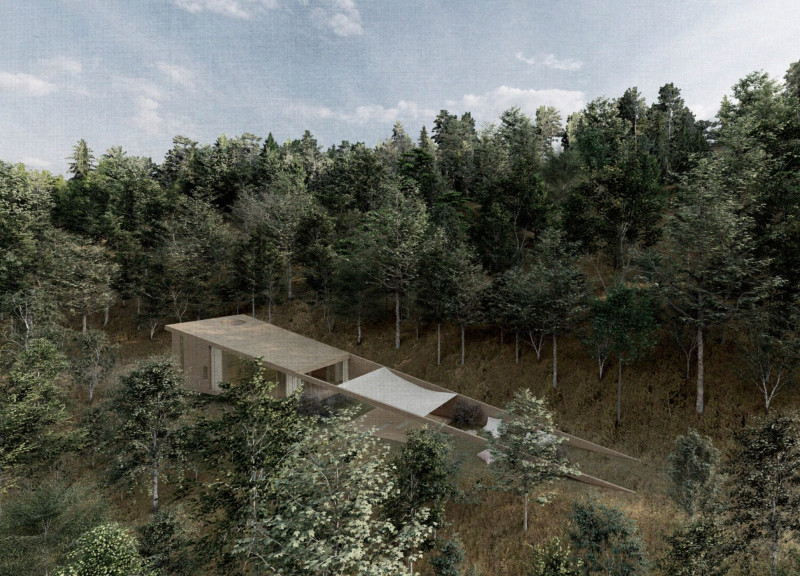5 key facts about this project
The project under review presents a meticulously crafted architectural design that integrates contemporary aesthetics with functional requirements. Situated in an urban environment, this project serves a multifaceted role, contributing to the spatial dynamics of its context while addressing the needs of its occupants. The design incorporates an array of elements that exemplify modern architecture principles, combining form, function, and sustainability.
The building's structure is characterized by its use of both innovative and traditional materials, which include concrete, glass, and steel. These materials not only afford the design a robust and durable quality but also enhance its visual appeal. The concrete offers structural integrity and sound insulation, while expansive glass facades introduce natural light, creating an inviting atmosphere within the interior spaces. The steel elements contribute to the overall stability, allowing for larger open spaces and flexible layouts that adapt to various functions.
The project embodies a contextually responsive design approach, where the local climate and cultural backdrop have informed key architectural decisions. Natural ventilation strategies are integrated into the layout, promoting energy efficiency and occupant comfort. Additionally, outdoor spaces are strategically placed, fostering a connection between the building and its surrounding environment. The landscape design complements the architecture, utilizing native vegetation that requires minimal maintenance while enhancing biodiversity.
Sustainability is a pivotal theme throughout the design, with elements such as rainwater harvesting systems and solar panels incorporated into the project. These systems not only reduce the environmental footprint but also serve to educate occupants about sustainable practices. The overall layout facilitates seamless interactions between indoor and outdoor areas, encouraging a lifestyle that values ecological awareness.
Unique to this project is its attention to user experience, integrating technology and accessibility into the architectural framework. Smart building systems enable efficient management of resources and provide occupants with real-time feedback on their energy usage. Additionally, the design prioritizes accessibility for individuals of all abilities, ensuring that the spaces are inclusive and welcoming.
Moreover, the project’s conceptual framework is reflected in its architectural expressions, where innovative spatial configurations challenge conventional layouts. This design approach permits versatility in function, enabling areas to be easily reconfigured for different uses, whether for social gatherings, professional activities, or solitary pursuits.
Exploring the architectural plans, sections, and designs further reveals intricate details, such as the thoughtful placement of windows that enhance views and natural light, as well as the careful consideration of scale and proportion that harmonizes the structure with its surroundings. The architectural ideas presented in this project stand as a testament to forward-thinking design, emphasizing how architecture can facilitate a sophisticated dialogue between buildings, their inhabitants, and the environment.
For more in-depth insights into the architectural plans, sections, and designs, it is encouraged to delve deeper into this project presentation. This exploration will provide a comprehensive understanding of the design philosophy and functional nuances that define this architectural endeavor.






















































